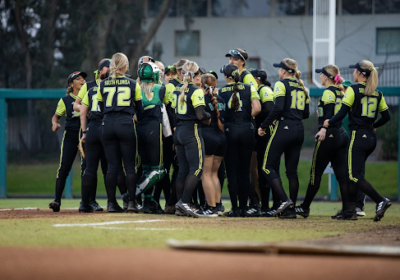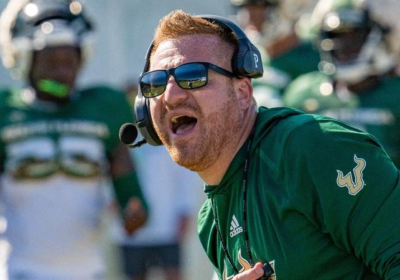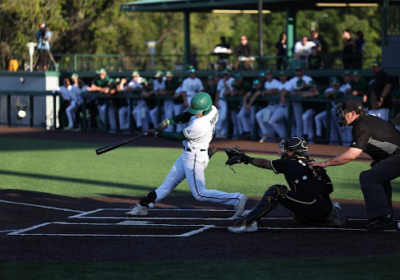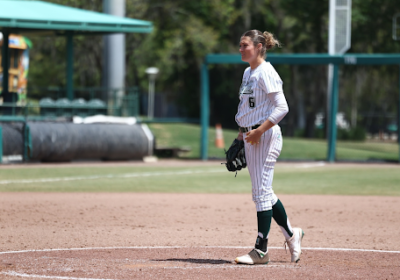Students voice initial support for paying fee to help fund on-campus stadium

USF athletics announced in August a plan to start exploring options for a $200 million on-campus football stadium.
SPECIAL TO THE ORACLE/FEASIBILITY STUDY
Student Body President Moneer Kheireddine said Wednesday that a semesterly fee between $30 and $80 could be used to help fund an on-campus football stadium. The idea is still hypothetical, but students have begun to express their support for paying an additional fee.
With construction of the stadium being at least five years away, current USF students would not be able to access the proposed $200 million stadium as students, but as alumni. Many, however, still support the fee, saying the stadium would bring prestige to the university and to their degree.
“With tuition already so expensive, I wouldn’t even notice an extra fee really,” Mariane Eibar, a sophomore majoring in cellular and molecular biology, said. “A stadium on campus would be beneficial to the school as a whole. The school would make the money back and USF would receive more recognition.”
Eibar said she attended three football games in 2017. Had the stadium been on campus, she would’ve attended every home game, “without a doubt.”
According to Doug Chung, a Harvard University business professor, success in football brings national exposure to universities at a level traditional advertising cannot.
After UCF went 13-0 and won the Peach Bowl last season, the school announced on March 16 that it gained over $200 million in equivalent advertising exposure. The report took into account national television game broadcasts, television news coverage, print media, news on websites and social media.
In a 2013 article published in the journal Marketing Science, Chung wrote that Boise State, a non-power-five-conference team like USF, saw an increase of 18 percent in applications following its 2006-07 football season where it finished 13-0.
The belief of Eibar and other Bulls’ fans is that if USF had an on-campus stadium, it would be able to attract better recruits, which would in turn correlate to sustained winning. Continuous success on the field would then lead to USF as an institution gaining more exposure, thus making it a more nationally recognized university.
“Honestly, I’d pay a $100 (fee),” Mallory Owens, a freshman majoring in pre-nursing, said. “My parents would probably contribute as well.”
Caroline Barton, also a freshman pre-nursing major, agreed with Owens. Like Owens, she’s a New Jersey native, but could see herself returning to USF for games in the future if USF built a stadium on campus.
“It’s a part of the (college) experience,” she said.
For current students, however, the stadium would not be a part of their college experience. Instead, they’d pay every semester for future Bulls to have an on-campus stadium, while they would have to drive or bus 30 minutes to Raymond James to see USF play as a student.
“I do think a stadium is extremely necessary,” Eibar said. “It is a hassle to have to get on a bus and go 20-30 minutes downtown to get to the stadium.”
Because she cares about future USF students’ college experience and the value of her degree rising with time, Eibar doesn’t mind a fee. Not all students, however, share her sentiment.
Amar Mahbubbani, a sophomore majoring in anthropology, supported the idea of paying approximately $50 a semester for an on-campus stadium. When he found out the stadium wouldn’t be constructed for at least five years, however, his mind changed.
“I think with that information, I’d be against building a stadium (with that fee),” Mahbubbani, who attended three USF games last year, said. “If they could find a way to reduce those costs, then maybe I’d change my mind.”
If USF charged its total enrollment of 50,577 students a $50 fee, USF would make $2,528,850 every semester. At that rate, in order to fully fund the proposed $200 million stadium, it would take USF 79 semesters, at the least, to fully fund the stadium, or pay back state bonds, through a student fee.
Colorado State, which debuted a new $220 million on-campus stadium for the 2017 season, charged a yearly student fee of $25 to its enrollment of 33,314. Baylor, which opened up a new $266 million stadium in 2014, charged no student fees to build.
For Luke Ewart, a foreign exchange student from Australia, the stadium would reap no benefits for him. It’d only make his semesterly fees higher.
“I’m only here temporarily,” Ewart said. “I can see everybody talks about the advantages of having a stadium on campus. I think it’d be good in the long term, but I know the students who’re currently here wouldn’t be able to experience it.”
Like Ewart, Trenton Davidson, a sophomore majoring in marketing, wouldn’t mind an extra student fee on top of tuition. However, he’d like to see it used to fund something other than a football stadium.
“I’m more of an arts guy,” Davidson said. “Everyone has their niche. I think it should be an option for students to pay for it or not. If it was mandatory, it would kind of suck. I know a lot of people here don’t care about football.”
For some USF students, however, an on-campus stadium would be just what they needed to get into the sport.
“I think a stadium would be great,” Ratik Mittal, a graduate medical student, said. “If it was here already, I’d actually go to a game. I’m for it.”






